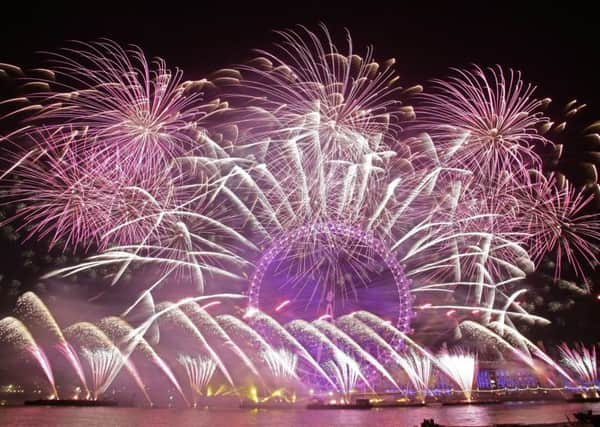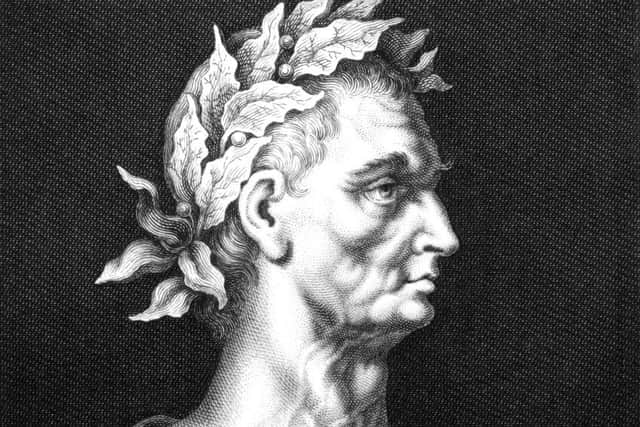The curious and confusing history of New Year’s Eve


The years tick by independently of culture or creed - but without the religious significance of, for example, Christmas, or the political importance of, say, American Independence Day, it’s difficult to place New Year in the calendar canon.
Advertisement
Hide AdAdvertisement
Hide AdThe terrestrial year maps the amount of time it takes Earth to orbit the sun, but there is no reason besides tradition for January 1 being a beginning, or December 31 being an end. Julius Caesar was the first person to adopt these days. Previously the Roman calendar tried - and generally failed - to follow the lunar cycle, constantly falling out of sync with the seasons and celebrating the new year at the equinox in March.


With the help of an Alexandrian mathematician, Caesar adopted the much more logical solar cycle, with leap years and the familiar January start. The new calendar debuted in 45 BC, but there was a problem. The pair had miscalculated, measuring the solar cycle at 365.25 days not 365.242199 - an error of 11 minutes per year. By the year 1000 the Julian New Year was January 7. In 2020 it will be on January 13.
Inevitably, it took onlookers some time to clock the error, and it wasn’t until the 1570s that the Roman Catholic Church decided something must be done. In 1582, Pope Gregory XIII baptised the Gregorian Calendar, the system we use to this day.
Advertisement
Hide AdAdvertisement
Hide AdMost countries have now adopted the Gregorian scheme (though Russia only did so in 1918, and Turkey in 1927), but the world’s collage of calendars are still without conformity.
Chinese New Year stands out among the outliers - 1.4 billion people for whom the bell drops on February 5 - while the Islamic Calendar celebrates on August 20.
In an age of global media, the strangeness of the New Year spectacle is pretty easy to see. Consider an American NYE telecast: At 05:00 GMT it’s ‘Happy New Year Connecticut’, an hour later it’s ‘Happy New Year Illinois’, another hour and it’s ‘Happy New Year Colorado’, and then it’s a full three hours until ‘Happy New Year Hawaii’.
In fact, given the relaxed pace at which time sweeps round the globe, and the various time zones and half-time zones different countries use, an individual with a speedy private plane could theoretically enjoy NYE 30-odd times.
Advertisement
Hide AdAdvertisement
Hide AdLast year even saw a jet company cash in on the international date line’s peculiarities, offering a package tour taking passengers from the New Year festivities in Sydney to the bell-dropping ceremony in Honolulu, 21 hours later.
Enough mind-bending. New Year has always been synonymous with partying, and the earliest known New Year’s ceremony - the 4,000 year old Mesopotamian festival of Akitu - was marked with 11 days of celebration and orgiastic ritual.
New Year’s resolutions go back almost as far - the Babylonians brought in the new year by apologising to the Gods, and promising to do better in the months to come.
Rosebud Preserves - the award-winning Yorkshire business that started from a family kitchen 30 years agoOne of our only truly global holidays, New Year’s Eve also has a unique scope for local twists, and some of these regional rituals are just plain weird. In Estonia revellers strive for a ‘lucky’ number of meals (seven, nine, or 12), in Spain they eat 12 grapes, one for each stroke of midnight, and in Italy citizens court good fortune by wearing red underwear.
Advertisement
Hide AdAdvertisement
Hide AdA favourite tradition was penned by Robert Burns in 1788, and still cuts through the glitz and glam on both sides of the Atlantic.
Nostalgic Scottish folk song Auld Lang Syne (literally “for times gone by”) is still sung at Hogmanay celebrations and bell drops across the English-speaking world, and captures the spirit of reflection that the year’s end could, and perhaps should, entail.